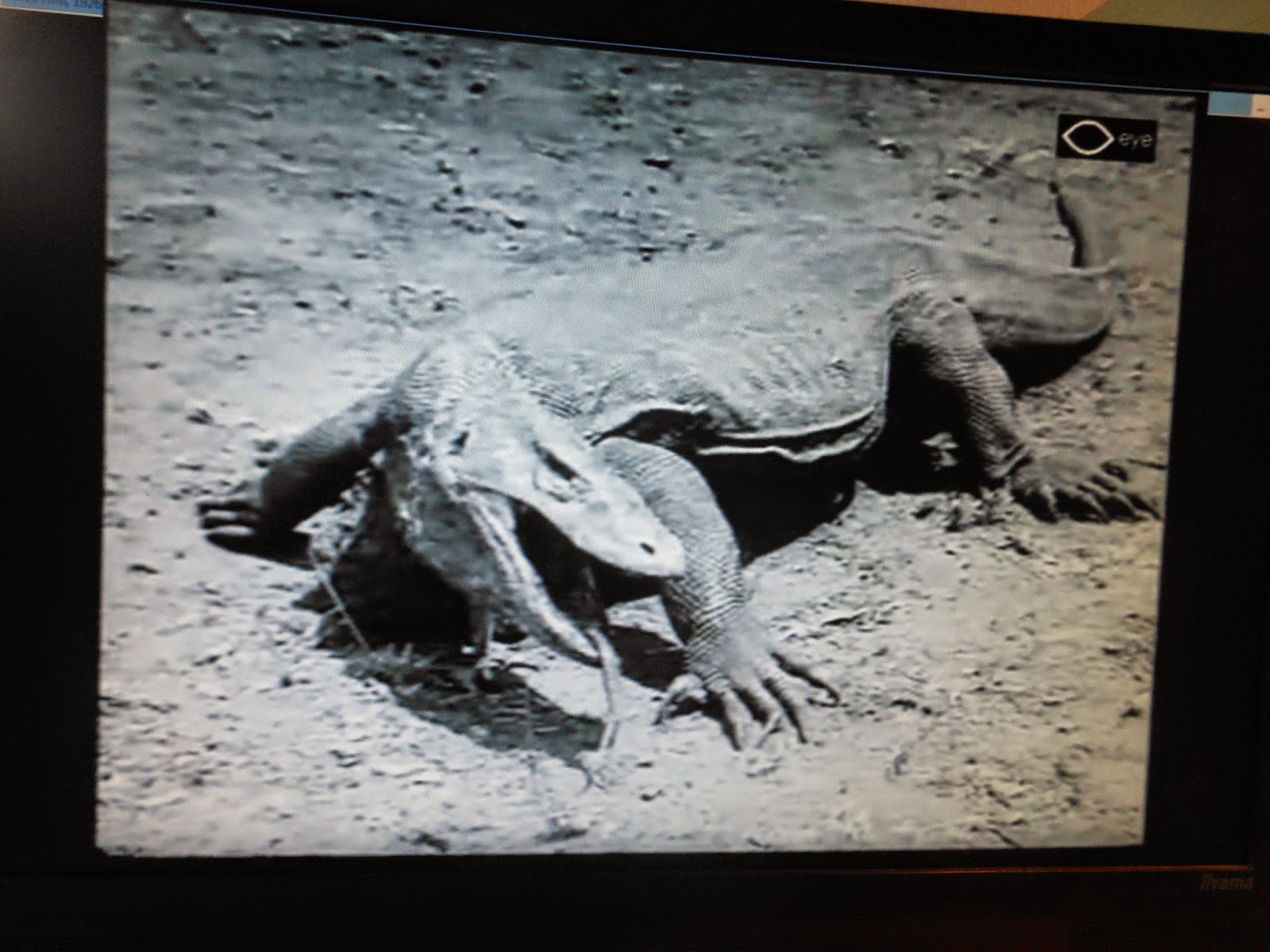Sandeep Ray is a PhD candidate in Singapore, working on Dutch colonial film-making. He pays also good attention to the two major mission movies, Rio Rago, a very romantic, even sentimental story of the fight between heathenism/Islam and the new Catholic religion in Flores, concentrating on the story of a girl who must marry a haji because her father is indebted to this man. We saw already several times this most popular missionary movie of the late 1920s.
Yesterday we saw the other long movie (2 hours, 7 minutes), on the Flores Mission, This movie has a slow start: beginning in the Netherlands where a boy goes to the seminary in Steijl, follows education until the ordination to priesthood. Also the seminary in Belgium, the education for nuns and lay brothers receives good attention in the first 30 minutes.
The mission cross is given to the missionaries who then leave on a huge boat, to Colombo, finally arrive in Batavia.
After Batavia (the cathedral and the big house of the Ursulines Sisters are shown), there are nice shots at Borobudur temple. Because there is no sound with the movia, there is only very short written commentary. Borobudur is really 'amazing'. That is it. Probably the movie was shown for sympathizers of the mission and there was a spoken commentary to the movie, but now we could only guess what the commentator would say. It is clear that the movie would be used for mission propaganda, although less than 25% is about specific missionary or even Catholic topics. Most is nice impressions of traveling, of foreign countries, beauty, amazing. Not to the dark heathens, but rather to interesting places.
The new missionaries are well received in Ndona by the faithful, especially young students who play the brass band.
After the short impression of the mission compound we leave the Catholic buildings and follow a missionary on horseback, going along the valley of the river, north of Ende, towards mount Kelimutu wi9th its famous coloured lakes. Much attention is also given to animals, monkeys, birds, hunting deers. Also the Komodo Varan is given a good deal of attention.
The local population is pictured, men, women, children, playing and laughing. It could have been a good anthropologists impression of his field of research. Cock fighting, dancing. There is a short remark about 'dark heathenism' but the dancing is pleasant and more joyful than sinful! There is a short written remark Wacht u voor de leer der blanken, 'Be careful not to accept the doctrine of the white people', but not many signs of resistance against the new religion is visible in this movie. An adat house or heathen temple is built or restored, but that must be told. There are ceremonies of slaughtering a goat and a pig, the blood is put on poles of the temple, but it is not frightening or looking disgraceful. The the priest commentator must have said something about the power of the devil.
Only the last fifteen minutes are more strictly about missionary work, schools (starting with the carpenter brother), cattle breeding, chicken, sisters on horseback visiting the sick in villages. Some school classes, again the brass band, girls waving.
The missionary is finally shown in ceremonial liturgical dress.
In the middle we see here bishop Verstraelen. The text explains the missionary as giving all-for-all, from friend to teacher, building a church. Baptism, wedding is celebrated. In a style that is easy to be recognized by Dutch Catholics as well.
This is a nice class of instruction on Indonesia in the early 1930s, especially the island of Flores. It depicts Catholic mission as a modernizing movement rather than as a new and powerful religion.
The first time I saw a missionary movie was in Leiden, about 1990: the anthropologists had a project of interesting movies and showed Ria Rago, but after 20 minutes the tape set fire and it was stopped. Then I could buy a copy from KDC, the Catholic documentation centre of Nijmegen University.
Now Sandeep Ray received the access to the movie through a code on the internet from the Eye Institute in Amsterdam, the Dutch Institute for photographs and movies. Thank you, Sandeep for sharing this link with us.




Geen opmerkingen:
Een reactie posten